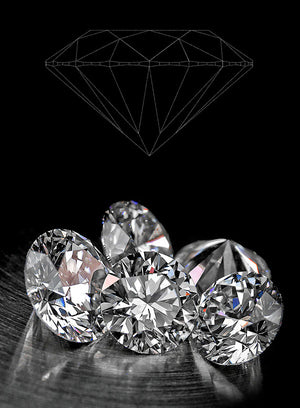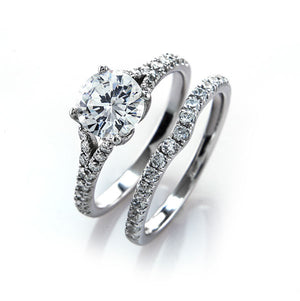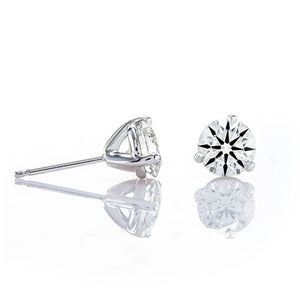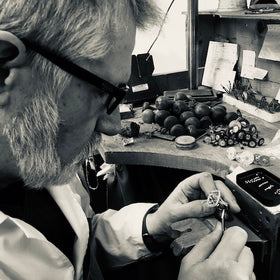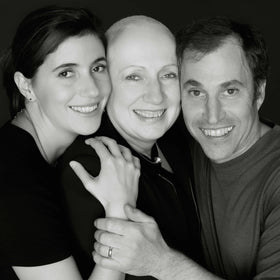
Symmetry in diamond cuts
There are four factors to take into account when looking at diamonds - cut, clarity, color and carat. However, even if two diamonds of the same size have an identical color and clarity, one can outshine the other. The difference comes down to how the diamonds are cut, according to master diamond cutter Brian Gavin. In an exclusive interview, Gavin reveled exactly what about precision cutting makes some diamonds stand out from the pack.
Diamond structure
Gavin explained that to really understand what makes a well-cut diamond, you must know a little about how the structure of a diamond affects the light that enters it. When Gavin engineers a cut that focuses on performance, he puts a lot of attention into creating the pavilion. The pavilion is the distance from the bottom of the girdle - the widest part of the diamond - to the cutlet - or the point. This is the depth. For a visual chart of a round cut diamond's structure, take a look here.
A depth that is too shallow or too deep will allow light to escape through the sides or bottom of the stone. The more precisely a diamond is cut, the more light will reflect.
"All diamonds shine," Gavin explained. The difference is that some shine more than others.
The quality of the cut falls on the shoulders of how well angles are designed. Diamond cutting is the geometry of light reflection.
Symmetry
Symmetry is all about equal spacing. In a round-cut diamond, all eight facets should be perfectly symmetrical, meaning each plane within the diamond is the exact same size. A perfectly cut diamond will shine more brightly than one whose facets are not completely symmetrical.
Gavin explained symmetry by likening diamonds to other circular items, like pizza. If you cut a pizza into eight equal slices, it will appear symmetrical. Move your blade over by even half an inch, though, and the symmetry of the pizza is destroyed.
It's not just diamonds that are considered more beautiful with symmetry. Humans subconsciously look for it when assessing how attractive another person is, Gavin explained. Diamond cutting pulls that basic human instinct to grade beauty through symmetry and imparts it in stone.
This is the founding concept for Brian Gavin's hearts and arrows. When a diamond is cut and polished perfectly - meaning each pavilion facet is symmetrical - you will be able to see a heart pattern. There should be eight total in a round-cut diamond. Once the hearts are formed, a perfect arrow pattern can be seen on the crown - the angled top portion of the gem.Remember that a perfect cut is symmetrical, which allows light to move easily through the diamond.
Magical moments
It's easy to be deceived by a poorly cut diamond when the moment is emotionally charged. Looking down at a diamond under the lights of a jewelry store almost feels like a dream and creates what Gavin calls a "Walt Disney" effect. Don't let the moment hide reality from you. With your knowledge of symmetry, you can asses the gem in front of you to be sure you're getting a perfectly cut diamond with the most amount of sparkle.





